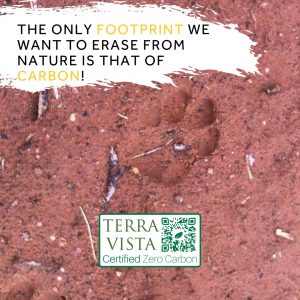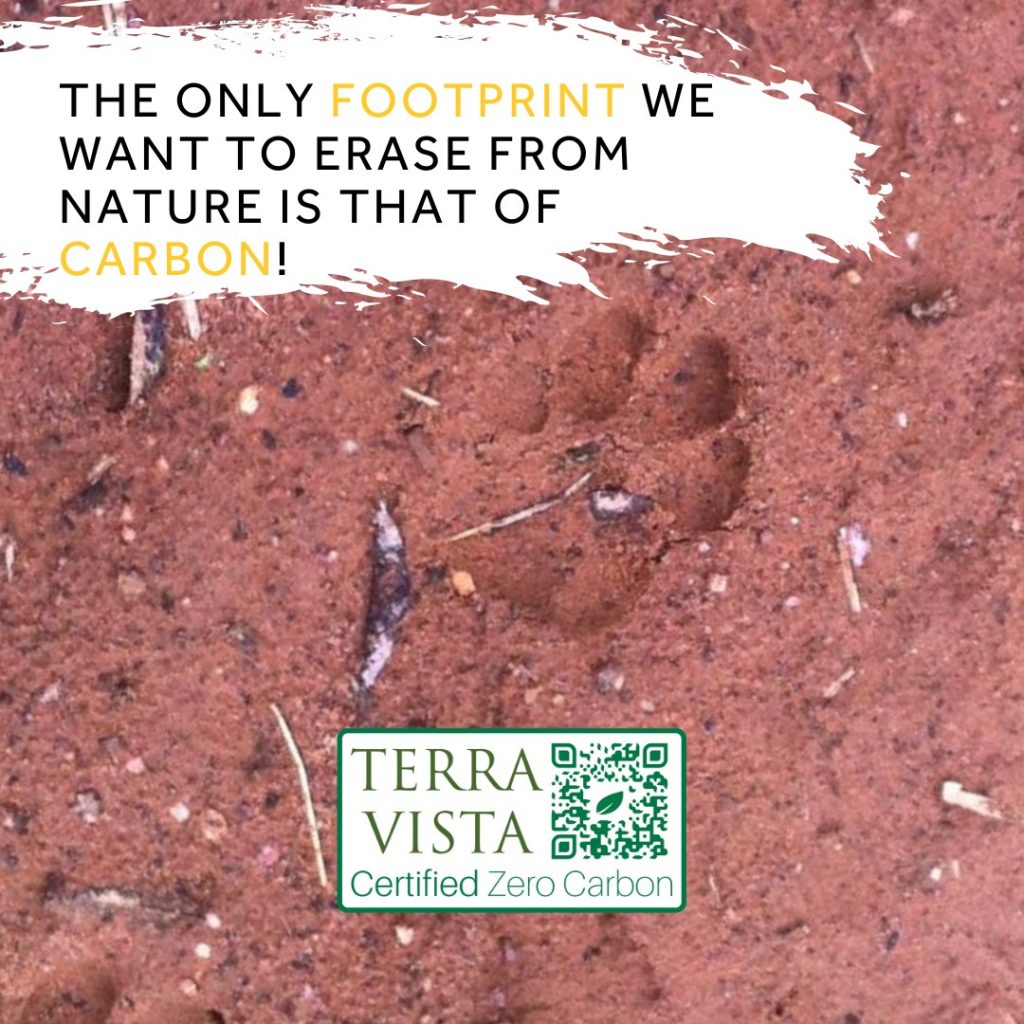Amidst so much alarming news in the current scenario, we believe that individual actions can make a huge difference. We understand changing the world on our own is not possible, but Onçafari’s ultimate goal is to change our reality and encourage others to do the same. Recently, Onçafari neutralized 100% of its carbon emissions in all operations (tourism, scientific
research and other activities). In other words, we compensated all of our carbon footprint for 2019. But what exactly does that mean? We’ll explain.
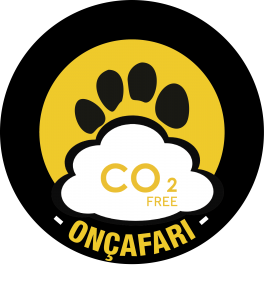
What is carbon footprint?
Carbon footprint is a measurement that calculates the amount of carbon that is being emitted to the atmosphere by a person, company, organization, specific activity, or government. All human activities generate some sort of impact to the environment, and we can calculate this impact through the amount of carbon dioxide (CO₂) generated by each one of them. The emission of these gases is a major cause of climate change. This means that, regardless of the activity performed, we are negatively impacting the environment. These activities might range from small actions such as driving a car to more elaborate actions such as burning fuel to produce energy in thermoelectric plants.
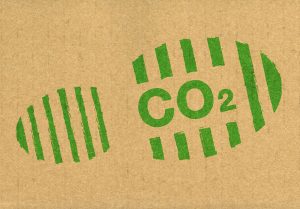
The calculation of these emissions results in your carbon footprint. The quantities of emissions can be measured using online calculators or by contracting the services of companies specialized in the subject.
How to neutralize this Carbon footprint?
Carbon footprint neutralization is the process in which a company or individual compensates for the amount of CO₂ they have emitted throughout the year. This neutralization occurs through the reduction of gas emissions, actions that convert this emission, or through the purchase of carbon credits. It works like this:
1 – Company “A” emits 10 tons of carbon through its activities during the course of the year. To neutralize these emissions, the company needs to buy 10 carbon credits (01 carbon credit = 01
ton of carbon).
2 – Company “B” works with sustainable wood management in the Amazon rainforest, preserving thousands of hectares of native forest. After a very rigorous certification process, this company
is approved and starts to generate X amount of carbon credits. This company’s credit is calculated according to the amount of CO₂ that is no longer generated and released into the atmosphere thanks to this conservation effort. These generated credits can be sold to other companies.
3 – A partnership is then created between company “A,” which needs to buy credits to offset its emissions, and company “B,” which sells the surplus credits it generated from the preservation
of the forest. In other words, company “A” pays for the service that company “B” provided by preserving nature.
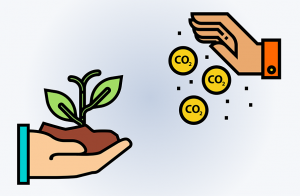
Emissions can be offset in 3 levels: scopes 1, 2 and 3. Scope 1 is when you neutralize the emission of gases produced by your direct activities (travel, food, among other things). Scope 2
is when you even neutralize the footprint of the energy used in your activities. Scope 3, on the other hand, is when you also neutralize indirect emissions of your activities, such as the travel of suppliers or customers who interact with your business.
How did Onçafari neutralize its carbon footprint?
Firstly, we entered into a partnership with Terra Vista, a company that sells carbon credits and advises on carbon footprint reduction projects for companies, NGOs, events, and even individuals.
Together with Terra Vista, we calculated the total CO₂ emissions that our activities generated in 2019. These activities include:
- Fuel spent on research and safari vehicles
- Air travel by our team
- Use of electricity in our bases
- Flights and transfers from national and international guests who visited us, among other things.
The sum of these emissions reached a total of 1,050 tons of carbon generated in 2019.
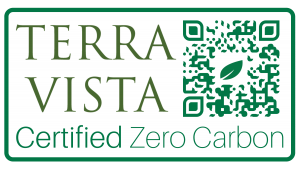
We then moved on to the next step: acquiring enough carbon credits to compensate the we had emitted. The company we chose to buy the credits from was Agrocortex. They have a sustainable forest management project in an area of more than 200,000 hectares in the Amazon rainforest. Through management, they protect the forest, generate jobs and income for local people, and
further stimulate socioeconomic development. They regularly undergo strict international audits which guarantee the seriousness of the process as well as the effectiveness of avoiding the deforestation of the area. Since the beginning of the project, Agrocortex has avoided the deforestation of 3,299 hectares of forest.
More than conservation
We understand that in addition to conserving biodiversity, it is our duty to keep up with our environmental bill. The only footprint we want to erase from nature is that of carbon.
